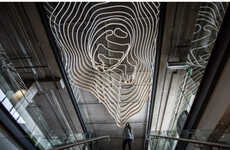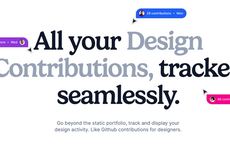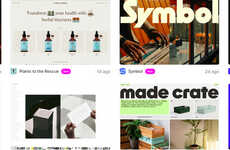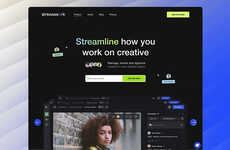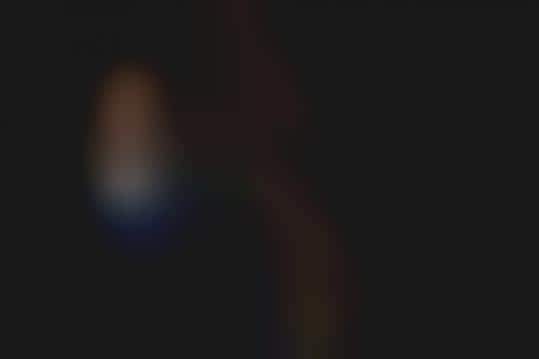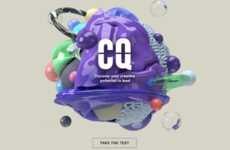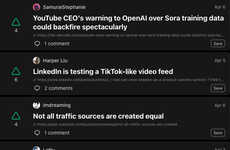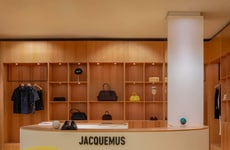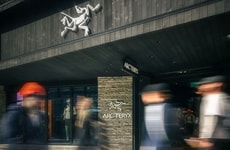
Scott Belsky is the Founder and CEO of Behance, a design site that allows creative individuals the opportunity to showcase their work and build a professional network. Before Behance, Scott Belsky founded Live Big Enterprises, a sportswear company, so design runs deep. Scott talked with us about how important trends are in his world of design.
Three Questions with Scott Belsky
1. How do you keep your work on the cutting edge?
Our team is constantly doing research. Focus groups, interviews, debate, and discussion surround the development process of every Behance product. Our mission is also very focused: to organize the creative world. The combination of constant research and a very defined purpose helps us stay at the frontier. We are also very receptive to feedback.
In contrast to some companies that hesitate to develop new features based on the community’s needs, we take the opposite approach. Our job is to serve and empower the creative industries, and we will only work at the cutting edge if we are constantly receptive.
In our development process we are very reiterative. We are a design-centric company, and Matias Corea (Behance’s Chief of Design) runs an extremely tight, demanding, and arguably-revolutionary design process. We are constantly mocking things up for the team to consider, debate, and “sit with” for a while…
2. How do you reset yourself to become creative? Do you have any rituals?
Oh yes. Our team has a number of rituals that have developed over years of working together…but we tend not to share them. ;-) However, I can say that we are especially communicative. We try to air every issue or challenge that comes up, and we take the most pride in the chemistry we have developed.
3. What is an example of a time where you have thrown away an existing idea to force yourself to find something new?
Many times, in the development of ActionMethod, we forced ourselves to question the conventional approaches to how people and teams stay productive and manage projects. We kept getting stuck with some of the traditional principles for how people manage projects (timelines, shared projects, etc…), but we also realized that people ULTIMATELY use Post-it notes and to-do lists… Eventually, we took the plunge and departed from the “norms” of project management.
Similarly, in the Behance Network (behance.net), we wanted to “liberate” the traditional static-portfolio of creative people online. We took some major leaps in how creative work is showcased online…and now it seems that other sites are starting to change and follow suit.
Three Questions with Scott Belsky
1. How do you keep your work on the cutting edge?
Our team is constantly doing research. Focus groups, interviews, debate, and discussion surround the development process of every Behance product. Our mission is also very focused: to organize the creative world. The combination of constant research and a very defined purpose helps us stay at the frontier. We are also very receptive to feedback.
In contrast to some companies that hesitate to develop new features based on the community’s needs, we take the opposite approach. Our job is to serve and empower the creative industries, and we will only work at the cutting edge if we are constantly receptive.
In our development process we are very reiterative. We are a design-centric company, and Matias Corea (Behance’s Chief of Design) runs an extremely tight, demanding, and arguably-revolutionary design process. We are constantly mocking things up for the team to consider, debate, and “sit with” for a while…
2. How do you reset yourself to become creative? Do you have any rituals?
Oh yes. Our team has a number of rituals that have developed over years of working together…but we tend not to share them. ;-) However, I can say that we are especially communicative. We try to air every issue or challenge that comes up, and we take the most pride in the chemistry we have developed.
3. What is an example of a time where you have thrown away an existing idea to force yourself to find something new?
Many times, in the development of ActionMethod, we forced ourselves to question the conventional approaches to how people and teams stay productive and manage projects. We kept getting stuck with some of the traditional principles for how people manage projects (timelines, shared projects, etc…), but we also realized that people ULTIMATELY use Post-it notes and to-do lists… Eventually, we took the plunge and departed from the “norms” of project management.
Similarly, in the Behance Network (behance.net), we wanted to “liberate” the traditional static-portfolio of creative people online. We took some major leaps in how creative work is showcased online…and now it seems that other sites are starting to change and follow suit.
Trend Themes
1. Constant Research - Opportunity for disruptive innovation lies in conducting continuous research to stay at the forefront of the design industry.
2. Receptive to Feedback - The practice of being receptive to community feedback enables companies to develop new features that cater to the needs of creative industries.
3. Questioning Conventional Approaches - By challenging traditional principles and norms, companies have the potential to discover new and innovative ways to manage projects and showcase creative work.
Industry Implications
1. Design - In the design industry, there is potential for disruptive innovation by incorporating constant research and being receptive to community feedback.
2. Creative Industries - Opportunities for disruptive innovation in the creative industries can be found by questioning conventional approaches and liberating traditional showcases of creative work.
3. Project Management - The project management industry can benefit from disruptive innovation by challenging traditional principles and finding new ways to enhance productivity and collaboration.
4.9
Score
Popularity
Activity
Freshness

